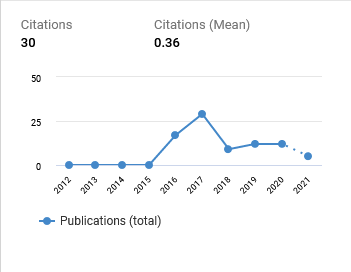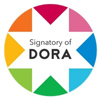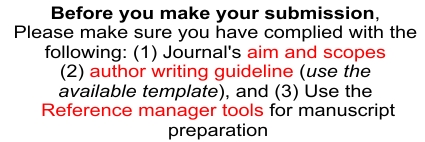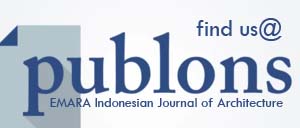Morphological development of the Kupang Old Town area
DOI:
https://doi.org/10.29080/eija.v6i2.1010Keywords:
Kupang old town area, Old town spaces, Trading city, city norphology, Kupang Old otown, Old town spaces trading city, cAbstract
Kupang is the capital of East Nusa Tenggara Province, located on the coast of Kupang Bay, northwest of Timor Island. The development of Kupang old city area began in the 15th century, starting as a city initiated by King Helong until the Dutch, Portuguese, and Chinese governments' intervention. It has a unique morphology of the city area to research. The purpose of this study is to identify the development of the Kupang Old City area over several periods and analyze any changes and comparisons related to the morphology of the Kupang Old City area. Exploratory, descriptive research with tissue analysis method is used in this study to read the history that occurred in Kupang old city area from the early period formed the 15th-century area until the 21st century.Furthermore, the historical reading method wasused to find changes and morphological comparisons of the Kupang Old City area from the 15th to the 21st century and explain how Kupang old city spaces began to grow and develop. This research concluded that the Kupang old city area began to develop because it has the foremost generator that is the entry of King Helong's power to make Kupang Old City a city on Timor Island. The findings of changes and comparisons of the morphological development of Kupang Old City area are due to the influx of Dutch, Portuguese, and ethnic Chinese,and there is a change after Indonesia's independence, namely the change in the status of Kupang old city area based on the evolving political aspects
Downloads
References
Ardhiansyah, N., Widyastuti, D. A. R., & Septiari, E. D. (2019). Perubahan tata guna lahan kampung Prawirotaman kota Yogyakarta sebagai dampak keberadaan kawasan komersial. ARTEKS : Jurnal Teknik Arsitektur, 3(2), 131–138. https://doi.org/10.30822/arteks.v3i2.66
Bakosurtanal. (1998). Kupang D M 16,28. Leiden Universities Librarie | Digital Collections. http://hdl.handle.net/1887.1/item:2407792
Bintarto, R. (1977). Pengantar geografi kota. Spring.
BPS Kota Kupang. (2014). Kota Kupang Dalam Angka 2014. https://kupangkota.bps.go.id/publication/2014/08/15/58376aab884d1a8fea6071e9/kota-kupang-dalam-angka-2014.html
Branch, M. C. (1995). Perencanaan kota komprehensif: Pengantar & penjelasan (B. H. Wibisono & A. Djunaedi, Trans.; Terjemahan). Gadjah Mada University Press.
Departemen Pendidikan dan Kebudayaan Republik Indonesia. (1983). Sejarah Sosial di Daerah Nusa Tenggara Timur. Departemen Pendidikan dan Kebudayaan Republik Indonesia.
Fox, J. J. (1997). Harvest of the Palm: Harvard University Press.
J Detaq. (1971). Memperkenalkan Kota Koepang.
jejakembara. (2014, October 10). Kawasan kota lama kupang. Baomong Kupang. https://baomongkupang.wordpress.com/2014/10/10/kawasan-kota-lama-kupang/
Lake, R. C., Mberu, Y. B., Diaz, A., Lake, R. C., Mberu, Y. B., & Diaz, A. (2019). Elemen-Elemen Pembentuk Sistem Kota-Lama Kupang. Jurnal Arsitektur Komposisi, 12(3), 257–269. https://doi.org/10.24002/jars.v12i3.2235
Luitnan, I. A. (2012). Koepang tempo doeloe: Kisah eksodus etnik Helong dari Nusa Ina, penghuni pemula Kaisalun, Bunibaun, Kota Kupang, Nusa Tenggara Timur. Penerbit Ruas.
Rossi, A. (1984). The Architecture of the City. MIT Press.
Setiadi, A. (2018). Strategi implementasi konsep waterfront city kota Kupang. ARTEKS : Jurnal Teknik Arsitektur, 3(1), 1–10. https://doi.org/10.30822/arteks.v3i1.49
Situmorang, N. (2018). Citra Kota Kupang dalam Arsip (https://anri.go.id/sekitar-arsip/arsip-statis/naskah-sumber). Citra Kota Kupanga dalam Arsip; Arsip Nasioanal Republik Indonesia. https://anri.go.id/download/naskah-sumber-arsip-citra-daerah-kota-kupang-dalam-arsip-1586396164
Soh, A. Zacharias., & Damajanti, M. N. (2008). Timor Kupang: Dahulu dan sekarang. Yayasan Kelompok Penggerak Aktivitas Kebudayaan. http://repository.petra.ac.id/17156/1/Publikasi1_01026_1985.pdf
Whitehand, J. W. R. (1977). The Basis for an Historico-Geographical Theory of Urban Form. Transactions of the Institute of British Geographers, 2(3), 400–416. https://doi.org/10.2307/621839
Yunus, H. S. (2008). Dinamika Wilayah Peri-Urban: Determinan Masa Depan Kota. Pustaka Pelajar.
Zahnd, M. (1999). Perancangan Kota secara Terpadu: Teori Perancangan Kota dan Penerapannya (Vol. 2). Kanisius.

Downloads
Published
How to Cite
Issue
Section
Categories
License
- Authors retain copyright and grant the journal right of first publication with the work simultaneously licensed under a Creative Commons Attribution ShareAlike License that allows others to share the work with an acknowledgment of the work's authorship and initial publication in this journal.
- Authors are able to enter into separate, additional contractual arrangements for the non-exclusive distribution of the journal's published version of the work (e.g., post it to an institutional repository or publish it in a book), with an acknowledgment of its initial publication in this journal.
- Authors are permitted and encouraged to post their work online (e.g., in institutional repositories, pre-print sites, or on their website) prior to and during the submission process, as it can lead to productive exchanges, as well as earlier and greater dissemination of published work.
































